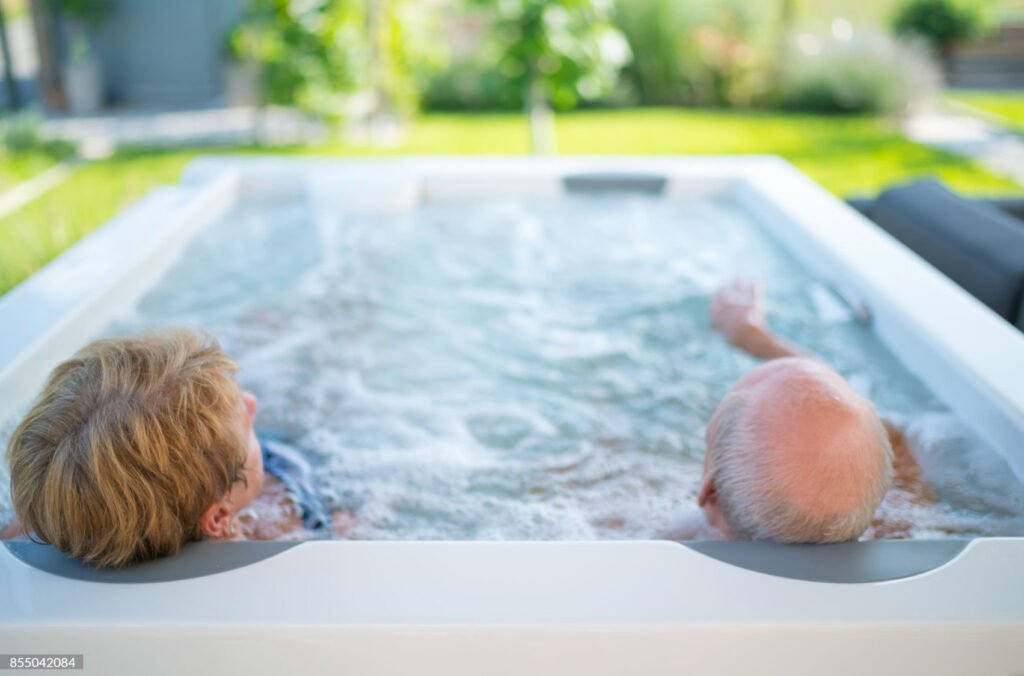The Ultimate Chill: Transform Recovery with Ice Baths
Lucie
December 17, 2024

When you push your body to its limits, whether you’re training for a marathon, crushing a CrossFit workout, or just living life at full throttle, recovery is key. One method that’s gaining serious traction is the ice bath – and for good reason. It’s not just for elite athletes anymore. Ice baths, or cold exposure therapy, are becoming a go-to recovery technique for anyone looking to reduce inflammation, ease muscle soreness, and boost overall recovery time.
In this guide, we’ll dive into the science behind ice baths, the benefits they offer, and how to safely incorporate them into your routine. Ready to chill your way to better recovery? Let’s jump in.
Why Transform Recovery ? The Science of Cold Exposure
It’s hard to deny that submerging yourself in ice-cold water sounds like a serious challenge. But when it comes to recovery, cold exposure therapy is a game-changer. When you step into an ice bath, your body is suddenly hit with cold temperatures, typically between 50 and 59 degrees Fahrenheit (10 to 15 degrees Celsius). This causes your blood vessels to constrict, reducing blood flow to the skin and muscles. The immediate effect? It reduces inflammation and numbs pain, providing relief from the stress your body experienced during a workout.
Here’s where it gets even more interesting: once you step out of the ice bath, your body begins to warm back up. This rewarming process causes your blood vessels to dilate, and blood rushes back into the muscles and tissues, carrying oxygen and nutrients that accelerate healing and recovery. It’s like a natural boost for your body’s repair system.

Ice Baths: More Than Just Muscle Relief
While muscle soreness relief is often the first thing people think of when it comes to ice baths, they offer a lot more than just pain management. Whether you’re a weekend warrior or a professional athlete, incorporating ice baths into your routine can offer a range of benefits.
1. Reduce Inflammation and Swelling
After intense workouts, your muscles experience microtears, and your body responds with inflammation to repair the damage. But too much inflammation can slow recovery. Ice baths help control the swelling by constricting blood vessels and limiting the amount of fluid and waste products that can build up in the affected areas.
2. Speed Up Recovery Time
For athletes, especially those training hard or competing regularly, speed is everything. Ice baths help to accelerate the recovery process. By reducing inflammation and encouraging fresh blood to flow to your muscles, they can shave hours or even days off your recovery time. This means less downtime and more time training.
3. Mental Resilience and Focus
The benefits of ice baths aren’t just physical. There’s something deeply psychological about pushing yourself to endure the cold. Every time you step into an ice bath, you’re building mental resilience and teaching yourself how to push through discomfort. This mental toughness can carry over into your athletic performance, helping you stay focused, calm, and ready to tackle challenges head-on.
4. Stress Relief and Improved Sleep
It may sound counterintuitive, but cold exposure therapy can actually help with stress management. By immersing yourself in an ice bath, your body releases endorphins, the “feel-good” hormones that help reduce stress. Plus, many people report better sleep quality after incorporating ice baths into their routine, likely due to the calming effect on the nervous system after the intense cold exposure.
How to Safely Add Ice Baths to Your Routine
Ready to take the plunge? Here’s how to incorporate ice baths into your recovery routine safely and effectively:
1. Prepare the Ice Bath
Fill a bathtub, barrel, or large container with cold water. Add ice gradually to reach a temperature between 50 and 59°F (10 to 15°C). It should feel uncomfortable, but not unbearable. You’re aiming for the optimal cold exposure – enough to stimulate the body’s natural healing processes without overdoing it.
2. Duration and Timing
The ideal duration for an ice bath is usually between 10 to 15 minutes. Any longer and the risks increase, including hypothermia. Start with shorter sessions if you’re new to ice baths and work your way up as your body adjusts. The key is to allow your body to feel the full benefits without overexposing it to the cold.
3. Start Gradually
If you’ve never done an ice bath before, start with something less intense – like a cold shower or even just icing specific sore spots on your body. This can help you ease into the experience and get your body accustomed to the cold shock before you take the plunge into a full ice bath.
4. Listen to Your Body
Ice baths should be uncomfortable, but they shouldn’t be excruciating. Always pay attention to your body’s signals. If you start to feel dizzy, numb, or overly uncomfortable, get out of the bath. It’s important to know your limits and stop the session if you feel anything unusual.
5. Post-Ice Bath Care
After your ice bath, it’s important to warm up slowly. You might want to take a warm shower or wrap yourself in a cozy blanket to gently bring your body temperature back up. Make sure to hydrate as well, as cold exposure can dehydrate the body. Replenishing fluids is crucial for muscle recovery.

Real-Life Impact: How Ice Baths Are Transforming Recovery
It’s not just about theory – real-life success stories show just how effective cold exposure therapy can be. Take, for example, professional athletes like NBA players and Olympic swimmers who use ice baths as part of their recovery protocol. Many of them claim that incorporating ice baths into their routine helps them recover faster and feel better during their next training session.
But it’s not only elite athletes who benefit from ice baths. Weekend warriors and fitness enthusiasts also report positive results. One CrossFit athlete shared how ice baths significantly reduced the muscle soreness she experienced after high-intensity workouts, allowing her to continue training without the prolonged recovery times.
And it’s not just athletes who are benefiting. Everyday people, from office workers to busy parents, are discovering the restorative powers of ice baths for managing stress, boosting energy levels, and improving overall well-being.
Conclusion: Embrace the Chill for Better Recovery
Incorporating ice baths into your routine isn’t just about toughening up – it’s about optimizing your recovery. Whether you’re looking to reduce muscle soreness, cut down on inflammation, or simply improve your mental toughness, ice baths offer a natural and effective solution. So why not embrace the chill and take your recovery to the next level?



